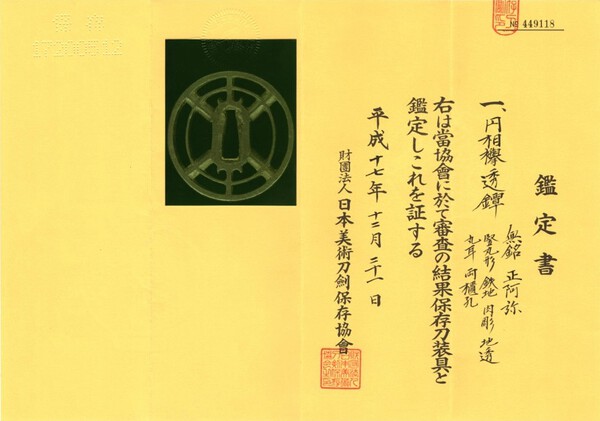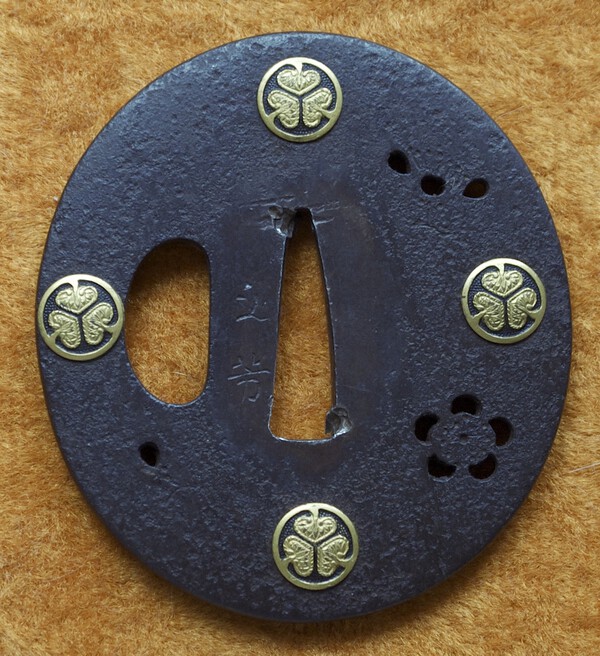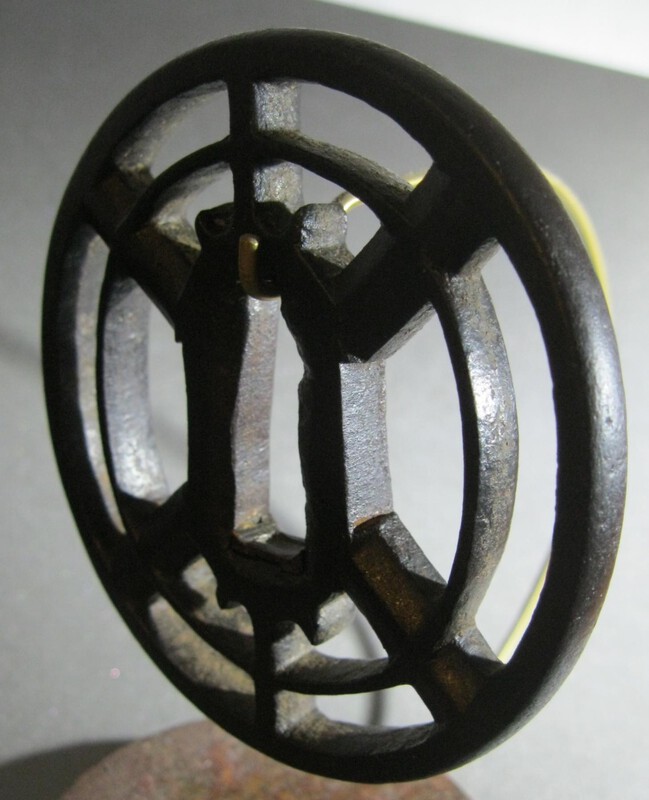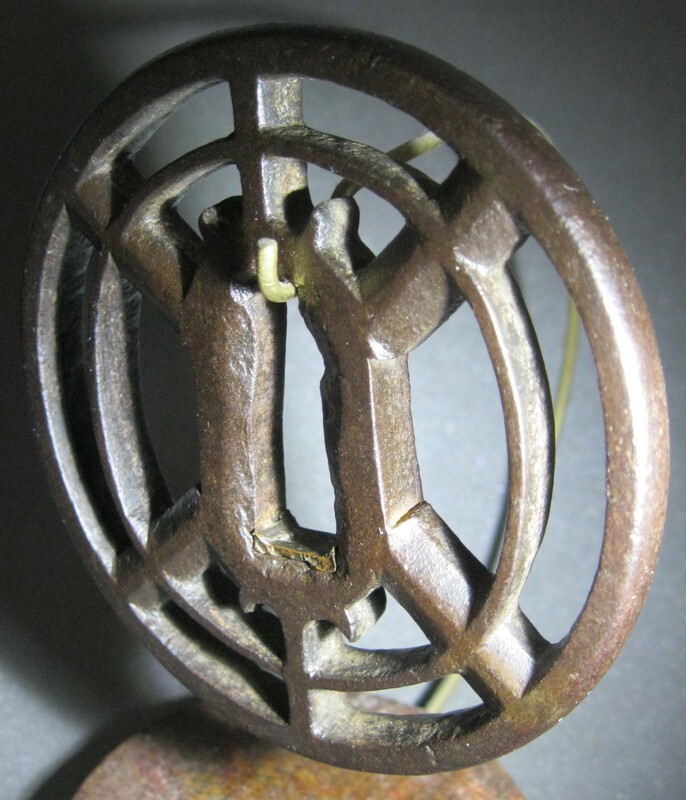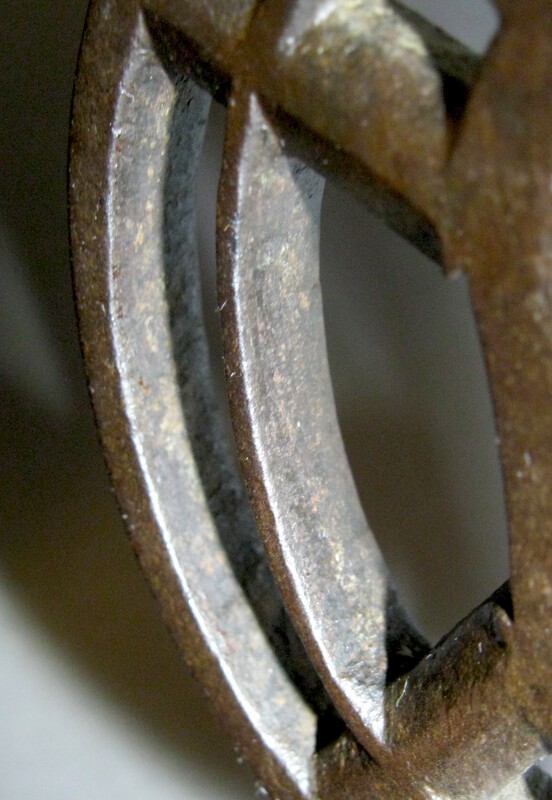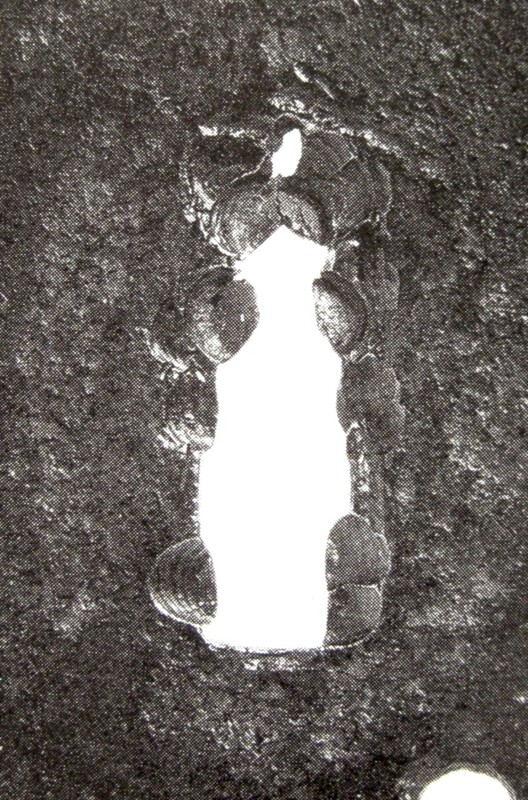-
Posts
407 -
Joined
-
Last visited
-
Days Won
1
Content Type
Profiles
Forums
Events
Store
Downloads
Gallery
Everything posted by FlorianB
-
Les, judging by the picture alone the worn-out look was produced on purpose. You can see similar ones from Higo frequently, occasionally the petals are executed in different metals on each side. Florian
-
Tim, I have got the impression the deeper I get into this topic the more I have to learn... Great comments of Yours! Florian
-
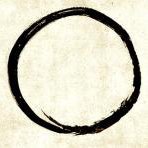
Antique(?) Tsuba Find - Genuine? Worth? Preservation!
FlorianB replied to timothyhunter55's topic in Tosogu
Nakago-ana obviously not correctly placed in the middle, hitsu-ana in a most unusual form, a scratched outline of a kogai-hitsu-ana, surface roughly raked, crude ornamentation - I’m afraid even if it should be Japanese (I rather think probably chinese) origin it’s poorly done and at least worthless. Sorry, Florian -
To Steve: Thank You for explaining my own words! That’s exactly what I meant though I tried to say it as short as possible. Probably too short... To all: I think It would be a good idea to get engaged with tea culture and tea aesthetics. This could help in understanding wabi-sabi. I'd like to recommend a book by Soetsu Yanagi: “The unknown craftsman. A Japanese insight to beauty.” - it deals with pottery only but it's very enlightning. Florian
-
I went in for Japanese aesthetic principles like wabi-sabi, kire or mono-no-aware frequently. Someone could read a lot about wabi-sabi but has not the slightest idea what the term means. There must be an individual understanding. It’s rather an expierience that can’t be explained. Also I think that pictures of Tsuba which claim to have wabi-sabi aren’t sufficient. You must study those in hand to get a feeling for it. Yours, Florian
-
Challenging indeed! However, often there isn’t any definitive answer. At least You never get certainty but only a probability based on the opinions of experienced collectors. So sometimes it’s a little bit disappointing when the outcome states „Owari with Kyo INFLUENCE“, „Owari OR Kanayama“, „Akasaka STYLE“ - or even the ubiquitous „Shoami“. Florian
-
I wrote in one of Your other threads that tsubako reproduced not only the works of their predecessors but also adopted ideas from other schools. So we can see today many similar designs from different schools or crossovers. Thats why in this board the question of origin appears frequently. Me too asked one or two times for help in attribution. I my opinion the questioned Tsuba from Nihontocraft-page is a Higo piece because it has another aestehic expression as the Heianjo-zogan example. Some of the inlays are missing but maybe this was made intentionally to create a “used effect” or playing with a combination of inlay and kebori.
-
The Higo guys produced great variety in design, materials and techniques, obviously the key to their success - and their large output. Most textbooks show only smaller selections of their work, however Higo is a field of interest of its own. Florian
-
Because of the hitsu-ana I would guess Higo origin Florian
-
Sometimes it becomes difficult to differentiate between the positive and negative sukashi because the empty space of a ji-sukashi gets an independent existence. Was in such cases an optical illusion maybe intended...? Florian
-
Just to clarify the motif of the second Tsuba, which has nothing to do with the mentioned mushrooms: Here You see warabite (fern sprouts) and myoga (ginger), a combination commonly found on sukashi Tsuba. Florian
-
The design of Your second Tsuba is clearly based on Owari, but the birds seem unusual for this school. Furthermore the rim appears to be rounded (though there are later Owari Tsuba with maru-mimi) and the Fundo run into the rim. My first impression was Akasaka. But it's diffcult to tell by this picture alone. Yours, Florian
-
Number 1 (Number One indeed!) proves the aesthetic sense and an eye for proportions of this anonymous Tsubako. Number 2 COULD BE Ko-Shoami, too, (although I stick to what I said above) probably a later copy of this design in variation with gilded bamboo (or reed) leaves. Alas, the picture alone isn’t good enough to estimate the quality. Florian
-
Claiming those Tsuba came from the same school would be mere speculation. Although they look similar you can’t deduce the origin from the appearance alone. A design was often copied by Tsubako of different schools. That’s why we find a certain motif on so many Tsuba. Some simply copied, others varied the motif. By the way, to copy was not bad or illegal (in the current sense of plagiarism) but showed the skills of an individual smith. Certainly, sometimes a copy was just a copy to accomodate demand... Yours, Florian
-
Hi Patrick, it’s sometimes very difficult indeed to differentiate between an old Katchushi and those made in Edo, especially late Edo times. Even the surface treatment of late specimen is often cunnigly made they could considered as old ones. That’s why I have lost my interest in Ko-Katchushi-Tsuba a little bit. By the way, the same problem occurs in Tosho-Tsuba, too. Yours is smaller dimensioned while the Ko-Katchushi are larger (very early ones 9-10 cm or larger, afterwards 8 to 9 cm). The design is sophisticated. However, judging by the pictures alone I would dare to put it into late Muromachi or Momoyama, i.e. a late Ko-Katchushi. In comparing Your Tsuba to others don’t cling to the motif alone because the motif isn’t the decisive factor. Consider measure, surface, nakago-ana, rim and so on, too. If You haven't the opportunity to study such Tsuba in hand, it helps to look for pictures of Ko-Katchushi-Tsuba (as much as you can get) to get a feeling for this style. Yours, Florian
-
Hello Patrick, I would claim this Tusba as Katchushi-style but a later one, early Edo at its best, probably later. Although the lower part of the picture is missing my supposition is based on the exakt shape of the nakago-ana and the somewhat stereotype form and layout of both hitsu-ana and the ivy leaves. The Tsuba is smaller but thicker than the old ones, too. Alas the condition isn’t good either so it looks older as it is. Yours, Florian
-
The paper seems to indicate, that the NBTHK played safe and therefore attributed to Shoami - that figures always. In such cases it’s a pity that there is no explanation to the outcome. Interstingly there is written “maru mimi” instead of "kaku-mimi ko-niku". A minor mistake only, but maybe an evidence of a certain routine. By the way: Obviously based on this certificate it was sold as “Ko-Shoami from Muromachi”. The mentiond Kanayama: Is it the one with the salmon? Florian
-
Well, I stick to my story. A very tasteful daisho and the tsuba suit well! Congrats! Florian
-
Gentlemen, I won’t conclude this telling discussion without giving You a glance on the paper issued for this particular Tsuba: Best, Florian
-
Hello Joel, very interesting indeed. I agree they are from the same school and maybe even the same maker. I do not think they are a daisho though the size differs. Just two similar Tsuba reunited. I bought in my younger days (in the last century) the below depicted Tsuba. It is signed as Yukiyoshi (or Koreyoshi, I'm not sure) and the seller said that this man belonged to Edo Ito-school. The Aoi-mon have been applied at a later date. I'd like the idea, a poor samurai came in service of a Tokugawa branch, but he couldn't afford a new formal Tsuba thus he altered his Tsuba like this. Nice story, isn't it, but probably it was just done to enhance an attractivness maybe for tourists. Best, Florian
-
Curran, I examined this Tsuba anew, but I'm not sure if those structures result from the 3-Layer-technique or by use and/or corrosion. I tried to make some pictures but I apologize for these mediocre ones. But please have a look by yourself. Best, Florian
-
Hello Jean, on earlier Tsuba the rim of the nakago-ana was optimized by more or less hammering, later seki-gane (softmetal inserts) where in use, so there was only seldom need to alter the nakago-ana itself. In my opinion a lot of nakago-ana haven’t changed too much and extremly modified ones are notorious. See example below. Cincerly, Florian
-
cit.: "...how one could judge the NAKAGO-ANA of an old and obviously 'used' TSUBA in terms of size and shape..." If You compare nakago-ana of a certain Tsubako common traits (shape, seme-tagane) appear frequently. But, of course, later alterations have to be carefully examined and considered. It’s the same with seppa-dai which are modified in many cases as well. Best, Florian
-
Yes, we’re talking about the very same person. No wonder that he, too, named the 3. Generation as possible maker. He dispelled my above mentioned doubts as an exception to the rule. So You see why I hoped to get shown some examples to prove those exceptions. Florian
-
In the opinion of a famous german Tsuba expert it has to be Ko-Akasaka. Thickness, steel and tekkotsu support this. Certainly I won’t dare to contradict, but I’m puzzled by this stiff Owari Design, the angular mimi, the lack of awari-gitae (indeed there is no hint of any linear structure in this Tsuba) and I miss a widening of the sukashi at the rim. Best, Florian



